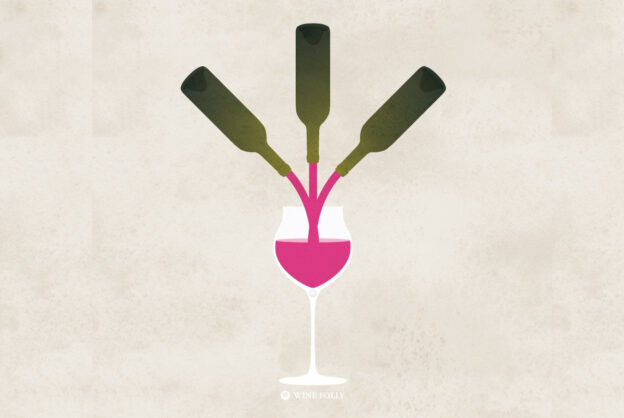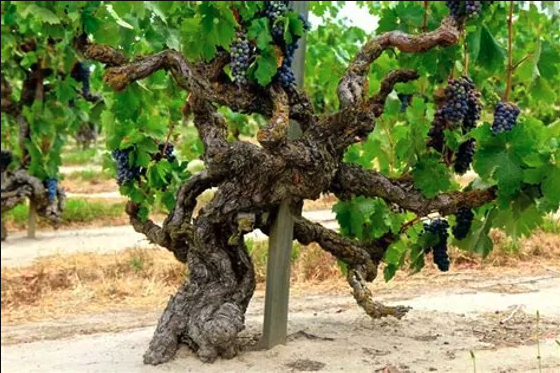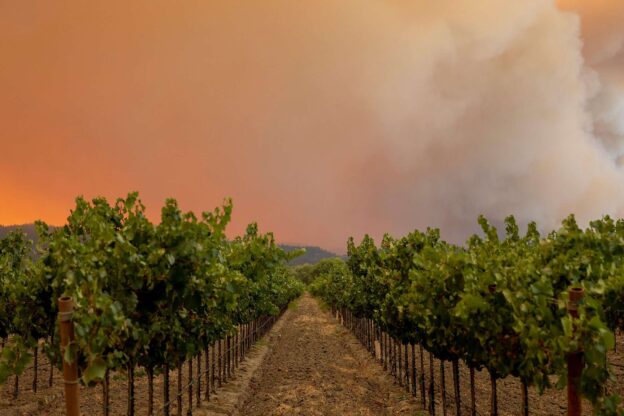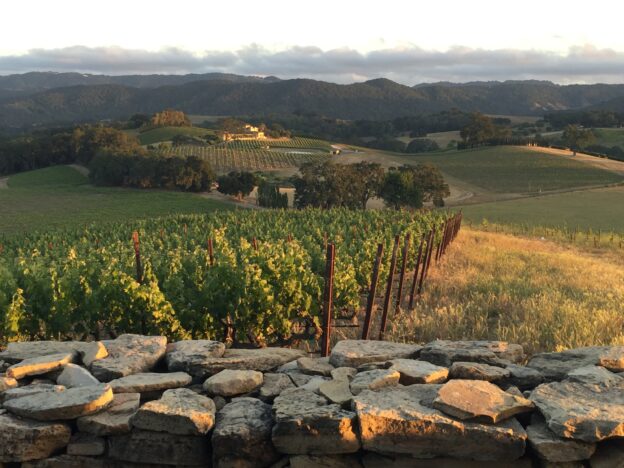There are many amazing wine regions throughout the world, which means I have plenty of vacation ideas on my bucket list. However, I find myself returning to California over and over again. The state is not only rugged and beautiful, but they produce some of my all time favorite wines.
When you think of California wine, most people will automatically think of elegant and sophisticated Napa Valley, and perhaps even somewhat more laid back Sonoma. While I have travelled to both places quite a few times, and my cellar is dominated by Napa Cabernet, my husband and I love visiting less well-known Paso Robles.

If you like big, red wines with lots of balanced fruit and body, this is the region for you. There are definitely more refined and elegant styles of wines being made there these days, but Paso is well-known for it’s powerful, juicy and full-bodied reds.
Paso Robles is considered the Wild West of California wine regions. In fact, it was founded by Jesse James’s uncle, Drury James. Folks in Paso say the cowboys give the winemakers a wild edge and the winemakers help refine the cowboys. Either way, in Paso the winemakers and the cowboys are one and the same.
Paso Robles is the fastest growing wine region in California with over 200 wineries today, mainly made up of small family-run producers. It is located in the Central Coast of California, about 2 hours drive north of Santa Barbara, and halfway between Los Angeles and San Francisco. The closest airport is San Luis Obispo County Regional Airport, which requires a brief layover in LA or San Francisco when flying from the east coast. From the airport, Paso Robles is a 30 minute drive east over the Santa Lucia coastal mountain range.
Paso Robles has a warm Mediterranean climate, characterized by long dry summers, warm autumns and rain mainly during its short winters. During the summer grape growing season, daytime temperatures can soar to 105 degrees F. However, the region has the largest day/night temperature swing of any other wine region in the state. At night, temperatures can plummet by 50 degrees. It is this constant fluctuation in temperature that makes this such an amazing region for grape growing.
Many of the grape varieties grown in the area require warm to hot conditions to ripen fully. Yet cooling at night is essential for the grapes to retain fresh acidity, so they don’t get over-ripe, jammy and flabby. This cooling effect in Paso Robles is helped by coastal breezes that blow inland through the valleys every afternoon, as well as by altitude. The west side of Paso Robles, where the most highly regarded vineyards are located, rises up to 2400 meters above sea level, helping to moderate the climate. These factors result in powerful, ripe wines that still have vibrant acidity and freshness.
Paso Robles is known for its “Rhône Varietals”, which just means they grow the same grapes in Paso that are also grown in the Rhône, France. These are dominated by Grenache, Syrah, Mourvèdre and Carignan. However, Paso Robles is also a region capable of growing the widest variety of grapes in California (over 40 different varietals), so you will also find reds such as Zinfandel, Cabernet Sauvignon, Merlot, and Spanish and Italian varieties, as well as whites including Chardonnay, Sauvignon Blanc, Viognier, Rousanne and Albariño.
More than just the incredible wines and weather, I love visiting Paso because of the people. The wine industry in Paso is like one big family. There is no competition between wineries. It’s a small community of winegrowers and winemakers and families that have all worked together at some point in their careers and been helped and mentored by each other. The support and encouragement they show each other is inspirational.
It is also an incredibly approachable, unpretentious wine region. It isn’t uncommon to see children and pets in tasting rooms. Everyone is welcome. It’s also an area where it is still possible to visit a winery and find the owner or winemaker strolling the grounds and wandering over to say hello and strike up a conversation with the patrons.
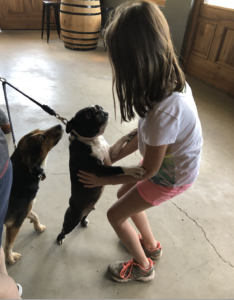
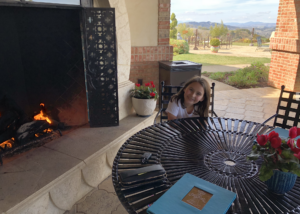
One of my best experiences was visiting Epoch Estate and sitting outside on a picnic table with my husband when a big guy in a cowboy hat sits down with us and introduces himself as Bill Armstrong, the winery’s owner. We had a great conversation with him and left with free bottles of wine and one signed by Bill that said, “Dave and Dina. Move to Paso! -Bill Armstrong”. That kind of thing just doesn’t happen in Napa.
Paso Robles is a beautiful place filled with phenomenal people and amazing wines. There is no where else like it. If you decide to visit Paso Robles, here are some recommendations of accommodations, wineries and restaurants. The best experiences are the tours and private tasting appointments that can be booked in advance via the winery websites, so plan ahead.
Wineries:
Clos Selene Winery, 2040 Niderer Rd, Paso Robles, CA 93446, http://www.clossolene.com/ – Clos Selene is a family-run vineyard with seven generations of wine making roots in Langeudoc and Bordeaux, France. The tasting room is a covered outdoor patio situated right next to the owner/winemaker’s home, with views of the surrounding vineyards. It makes for a cozy and intimate experience with beautiful wines that are influenced by a French winemaking style.
Daou Vineyards, 2777 Hidden Mountain Rd, Paso Robles, CA 93446 , https://www.daouvineyards.com/ – The only thing better than the wine at Daou is the utterly breathtaking view. The winery sits atop Daou Mountain, providing panoramic vistas from the gorgeous outdoor patio. Buy a bottle of wine in the tasting room, pull up a comfortable table by the outdoor fireplace, order a charcuterie plate and sit back, relax and take in the scenery. Daou makes for a magical afternoon.
L’Aventure Winery, 2815 Live Oak Rd, Paso Robles, CA 93446, http://www.aventurewine.com/ – L’Aventure has very nice wines, but they are also provide one of the best tasting room experiences. Not only is the staff incredibly friendly and accommodating, but you can take a tour of their wine caves, which is a fun experience.
Law Estate Wines, 3885 Peachy Canyon Rd, Paso Robles, CA 93446, http://www.lawestatewines.com/ – When many of the vineyard owners you meet around Paso tell you the best wine in the area is being made at Law Estates, you have to try it. I can tell you from first-hand experience, Law absolutely produces some of the best wines in the region. The tasting room is also a stunning hilltop masterpiece of concrete, steel and wood with unbeatable views. It’s a not-to-be-missed experience.
TH Estate, 870 Arbor Rd, Paso Robles, CA 93446, http://thestatewines.com/ – In an area where big, powerful red wines are everywhere, TH Estate produces beautifully elegant, sophisticated and balanced wines. They are also a winery that runs on a budget and may not have the latest and greatest wine production technology. Instead, they do things the old fashioned way, which makes for a very fun and educational tour of the facilities. The best wine we had on our last trip to Paso was a barrel tasting of TH Estate’s 100% Syrah that hasn’t yet been bottled. We’ll definitely be buying some when it is released!
Tin City, https://www.tincitypasorobles.com/ – Tin City is an industrial warehouse complex that has been reclaimed by boutique wineries and delicious restaurants that turned it into a hip and trendy enclave where you can spend an afternoon walking from one tasting room to another. If you get tired of wine, there is also an excellent brewery and distillery. Many new wine brands led by young rising stars in the wine industry get their start in Tin City, making some really interesting and unique wines that you’ll never find in your local wine shop at home. Some of my favorites are Benom, Jacob Toft and Top. For lunch, stop into Tin Canteen, and for a very unique dinner experience, check out Six Test Kitchen (see below).
Restaurants:
BL Brasserie, 1202 Pine St, Paso Robles, CA 93446, http://www.bistrolaurent.com – BL Brasserie, formerly known as Bistro Laurent, stands out amongst a plethora of California cuisine by offering decidedly French fare. As a lover of France cuisine, I can attest that BL Brasserie does not disappoint. The food is delicious and the service attentive. The chef has been in Paso for 20 years, and his longevity in running this restaurant is a testament to its quality in a area with so much excellent competition.
Kitchenette, 105 S Main St #1, Templeton, CA 93465, http://kitchenettetempleton.com/ – Kitchenette is 10 minutes south of Paso Robles in the town of Templeton, but it’s a must visit breakfast spot. The corn beef hash is like none you will have ever eaten anywhere else (I dream about that hash)! They also make amazing breakfast burritos and perfectly executed ricotta pancakes.
The Hatch, 835 13th St, Paso Robles, CA 93446, http://www.hatchpasorobles.com – The Hatch is a trendy location one block from the Paso Robles Downtown Park. They have a wide selection of wines on draft, micro brews, small batch whiskey, and delicious hand-crafted cocktails. The menu is centered on seasonal comfort food with a twist, and it’s delicious!
Thomas Hill Organics, 1313 Park St, Paso Robles, CA 93446, https://www.thomashillorganics.com – Thomas Hill Organics is a farm-to-table restaurant using the freshest organic and regionally sourced ingredients. Sit outside on their covered patio for a beautiful and very tasty dining experience.
The Restaurant at Justin, 11680 Chimney Rock Rd, Paso Robles, CA 93446, https://justinwine.com/visit-justin-winery/restaurant.html – If you are feeling adventurous and have a rental car, it’s well worth your time to take the 30 minute journey along winding country roads to reach Justin Winery and Restaurant, a vineyard oasis in the middle of untouched forest. Justin is a well-known large producer of excellent wines with price points for everyone. The restaurant, located off the tasting room, offers a beautiful chef’s tasting menu with optional wine pairings. However, if you’re going to Justin, it’s a no-brainer to pair your courses with Justin wines. The service, food and wine pairings are impeccable.
Accommodations:
Hotel Cheval, 1021 Pine St, Paso Robles, CA 93446, https://www.hotelcheval.com/
I am a big fan of VRBO.com, and have had nothing but fantastic experiences renting short-term vacation homes through the app. I have found that I really enjoy the space, privacy and peace of staying in a house rental, especially in places that I feel comfortable exploring on my own and don’t feel the need to concierge assistance or hotel ammenitites. Also, with two growing kids, having extra bedrooms at the same or cheaper price than a studio hotel room is definitely the way to go. If you are interested in exploring a house rental, here are two phenomenal options:
Homestead Hill Vineyard, http://www.thacherwinery.com/stay/ – This home is owned and rented by Thatcher Winery. It is located at the mid-point of a small hill with vineyards stretching out before and behind the home. A large front porch afford gorgeous views of the vines while enjoying morning coffee or an afternoon glass of wine. The updated home has three comfortable bedrooms, a large kitchen and dining area, and is very well appointed. It also has a bonus cottage next to the house with a cozy lounge perfect for reading a good book or just enjoying some solitude.
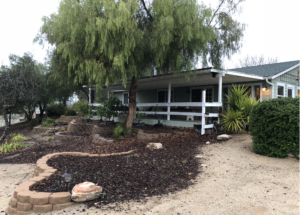
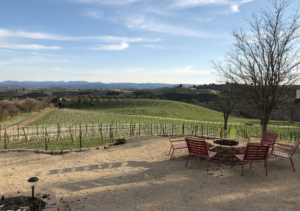
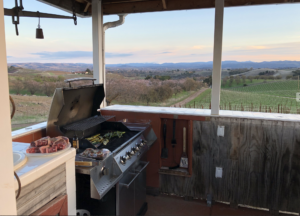
Willow and Vine, https://pasoroblesvacationrentals.com/rental/willow-vine/ – If you don’t need as much space as that offered at Homestead Hill, the two-bedroom Willow and Vine home is a perfect option. The home has been lovingly updated with rustic wine country touches and modern amenities. The bed is probably the most comfortable that I have ever slept in during my entire life. The home also has a beautiful front porch with astonishingly comfortable chairs that you can sink into while listening to the peaceful sounds of surrounding birds and other wildlife.
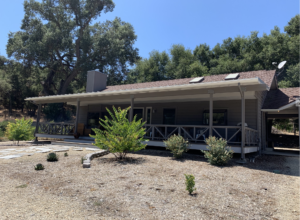
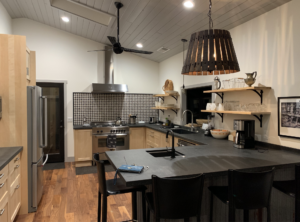
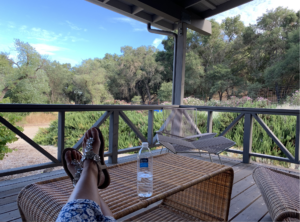
If you have any wine-related questions, wine tasting/review requests, or suggestions for future blog posts, please send me an email at [email protected].
